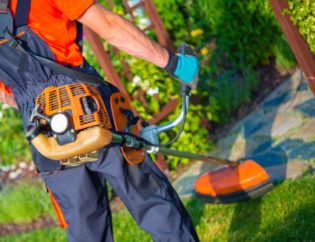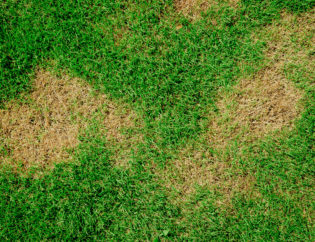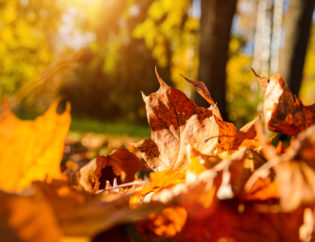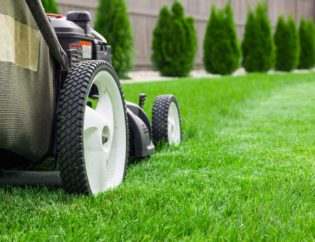
Preparing your lawn for winter is just as crucial as prepping for spring. What’s included in winter lawn cleanup might surprise you. But, neglecting these tasks could lead to a less-than-ideal lawn when the warm weather returns. A healthy lawn requires proper care year-round, and winter is no exception. What’s included in winter lawn cleanup involves taking steps to protect your lawn from harsh weather conditions, prevent disease, and ensure a vibrant green comeback in spring. We take pride in providing the best Doylestown lawn care services, ensuring your garden looks its absolute best all year round.
Why Winter Lawn Cleanup Matters
Many people believe that lawns require little care in the winter, but this is a mistake. While the lawn is not actively growing, winter upkeep is critical. Cleaning up fallen leaves, debris, and thatch helps to keep pests and diseases at bay. Clearing the lawn also enhances air and water circulation, reducing waterlogging and fungal growth. Addressing compaction and nutritional deficiencies in the fall offers your grass an early start, resulting in faster green-up and healthier growth in the spring.
Essential Steps for Winter Lawn Cleanup
Let’s take a closer look at the steps involved in ensuring your lawn thrives during the winter season and emerges healthier in spring:
Raking and Removing Leaves
This might seem obvious, but it’s important not to underestimate the damage a thick layer of leaves can inflict on your lawn. You might think, “What’s the harm?” A heavy blanket of leaves blocks sunlight, preventing your grass from photosynthesizing, which weakens its ability to survive the winter.
It also traps moisture, leading to fungal diseases and creating a breeding ground for pests. Aim to rake and remove dead leaves regularly.
You have options for how you deal with these leaves. You can compost them, offering valuable nutrients for your garden later. Or, consider using a mulching mower to shred the leaves into fine pieces and return them to the lawn as fertilizer.
Aeration is Key
Soil can get compacted over time, particularly in high-traffic regions or with a high clay content. This restricts air and water circulation, although aeration mitigates the problem by producing microscopic pores in the soil. These holes let air, water, and nutrients to reach the roots more efficiently. For small yards, use a garden fork, while bigger areas require the rental of a grass aerator. Fall is the best season to aerate since the soil is still warm enough for the holes to seal spontaneously.
Overseeding
Fall is the best time for overseeding. Why? Cooler temperatures and increased rainfall create optimal conditions for grass seed germination. Overseeding helps thicken your lawn, fill in bare patches, and improve its overall health.
Choosing the right seed is important for success. It’s a good idea to choose a seed variety well-suited to your region’s climate and soil type. For added benefits, consider incorporating a ground cover like Miniclover.
This drought-tolerant option not only adds a splash of color to your lawn but also naturally fertilizes the soil as it grows.
Fertilizing
Just as you need more coats in the winter, your lawn requires extra nutrients. Feeding it now allows it to withstand hard circumstances and recover in spring. Use a high-phosphorus fertilizer, which encourages root growth and general plant health, particularly during dormancy. It promotes winter hardiness, root formation, and energy storage, resulting in healthier grass after the winter.
Don’t Forget the Gutters
You might wonder why cleaning gutters is relevant to your lawn’s well-being. Clogged gutters can cause rainwater to overflow, leading to soil erosion, root damage, and even foundation problems.
So, ensuring proper drainage away from your house is vital for maintaining a healthy lawn. While you’re up there, visually inspect your gutters.
It’s a good time to spot any necessary gutter repair before winter sets in.
Additional Tips and Tricks for Optimal Results
When it comes to winter lawn maintenance, there are a few extra tips and tactics from professionals that can help ensure a healthy, bright lawn come spring. Continue to mow your lawn at a lower height as autumn approaches, around 2 to 3 inches for cool-season grasses, to allow more sunshine to reach the top and prevent disease.
Winterize your irrigation system to save water from freezing in the pipes and causing damage; sprinkler blowouts ensure that no water is left behind. A simple soil test can show your lawn’s pH and nutrient content, providing insight into what it requires. Adding mulch to your garden beds and landscaping plants acts as insulation, regulating soil temperatures and protecting sensitive plants over the winter. If you’re in search of top-notch Bucks County lawn care services, look no further than our dedicated team of professionals.
FAQs about What’s Included in Winter Lawn Cleanup
Fall cleanup services vary by region and climate, but they usually involve waste removal, mowing, aeration, fertilizing, and plant bed preparation. Fall yard cleanup focuses on preparing outdoor spaces for winter, which often includes duties such as storing outdoor furniture and winterizing water features.
Even though the grass is dormant, winter lawn care is vital for preventing pests, illnesses, and winter damage, resulting in a faster green-up in the spring. Spring cleanup consists of clearing residual debris, raking, and assessing any damage.
What’s included in winter lawn cleanup might feel like extra work, but it’s well worth the effort. This process ensures a healthy lawn throughout the colder months and paves the way for a thriving lawn once spring rolls around. It’s about taking proactive measures now to reap the benefits when the warm weather returns.










